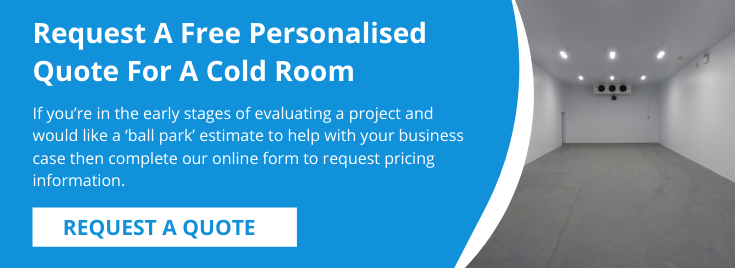What Type of Refrigeration System is Right for Your Business?
Do you need a cost-effective, high-capacity refrigeration unit for your cold room to keep it at the required operating temperature? If so, MTCSS can install split refrigeration or monoblock systems for all sizes and types of cold room. Both types of cooling unit are designed to carry out the same function, but what are the performance differences between split systems and monoblocks – and how do you decide which cooling method is right for your business? Let’s take a look.
What Are Split And Monoblock Refrigeration Systems?
Split refrigeration systems use two cooling units, one located inside and the other on the exterior wall of the cold room. The outside unit houses a compressor, which pumps pressurised refrigerant gas (at ambient temperature) through a condenser coil into the interior unit. Compression forces the gas into a highly pressurised liquid form.
As the refrigerant is channelled into the evaporator/expansion coil housed in the interior unit, the fluid rapidly expands back into gaseous form, accompanied by a significant drop in temperature. The temperature differential within the cold room causes an overall lowering of temperature. The coolant gas is then recirculated back into the condenser coil, where it warms up and is repressurised into a liquid, repeating the coolant cycle.
Monoblocks, on the contrary, use a singular tower configuration that fit through the wall within the cold room. They are self-contained, sealed systems that are ideal for use either in confined (well-ventilated) spaces or as part of a walk-in cold room to optimise storage.
Both Monoblock and Split units can be plumbed into refrigeration loops or installed as a locally unpowered part of a larger refrigerated environment. Both are suited to low-to-medium temperatures (Autumn-Spring UK).
As far as differences go, split systems generally require less energy input and lower maintenance than monoblocks, but are noisier and more expensive to install. Monoblocks, on the other hand, are more energy efficient and can be convenient to install, but do take up more relative space in the cold room and need careful attention to maintenance. Let’s look at these differences in more detail.
Drainage Capacity
Every unit relies on a rapidly condensed fluid to cool the cold room. However, not every unit needs a dedicated evaporator to dispose of the fluid to regulate temperature…
● Monoblocks self-evaporate – no drains or drainage plumbing is required for smaller scale refrigeration.
● Split units require drainage lines and an evaporator unit to work.
Footprint and Impact
Before installing your cooling unit, you will have to consider how it will fit into the cold room floor space.
● Monoblock refrigeration units can be mounted into a wall or ceiling. Mono is self-contained – so no exterior machinery is needed.
● Split refrigeration units take up more room and usually require more hardware. Dedicated condensers and evaporators are required to use split units within a cold room, alongside an exterior intake coil.
Installation
Each unit will need some modifications to where it’s housed before you start to use it.
● Monoblocks are plug and play – simply cut out your wall or ceiling to create an indent and find a power supply.
● Splits can require copper pipework, control panel wiring, dedicated power sources (beyond 240 v), and condenser and evaporator units. Complexity depends on the size, scale, and construability of the unit.
Flexibility
How easy is it to modify and fit each set-up?
● Monoblocks are combined and compact – ideal for confined cold rooms.
● Split refrigeration may be more difficult to fit and refit, due to the exterior machinery, pipelines and wiring, and the much larger footprint of the main unit.
Timeframe
How long will it take to get going with each type of cooling unit?
● Monoblocks can be installed quickly, but may take longer with ceiling and wall cuts and power point installation.
● Splits can take much longer to install due to their exterior machinery and plumbing.
Ideal Location
Whether your unit will fit into a cold room wall/floor or free-stand is important to keep in mind.
● Monoblocks can be used anywhere within internal, free-standing, or external cold rooms, as they are closed systems that aren’t dependent on extensive external fittings.
● Split systems require an exterior wall, so can only be used where this is directly adjacent to the cold room.
Ventilation
Ventilation is needed for all types of refrigeration unit.
● Monoblocks are better suited to cold open spaces. Vertical cooling units are less ideal for use in poorly ventilated, small areas as a lack of airflow can jam the system.
● Splits are ideal for enclosed, cramped, and tight spaces – the exterior condensation unit and evaporator is housed outside and doesn’t take up extra space.
Dedicated Refrigeration Solutions from MTCSS
If you need help choosing the right type of refrigeration system for your cold room, get in touch with MTCSS. We’ll give you a quote matched exactly to your refrigeration needs, space, and scale. We specialise in supplying English and Welsh farms, supermarkets, and businesses with quality cold rooms, doors, and cooling equipment. Give us a call to find out more.


